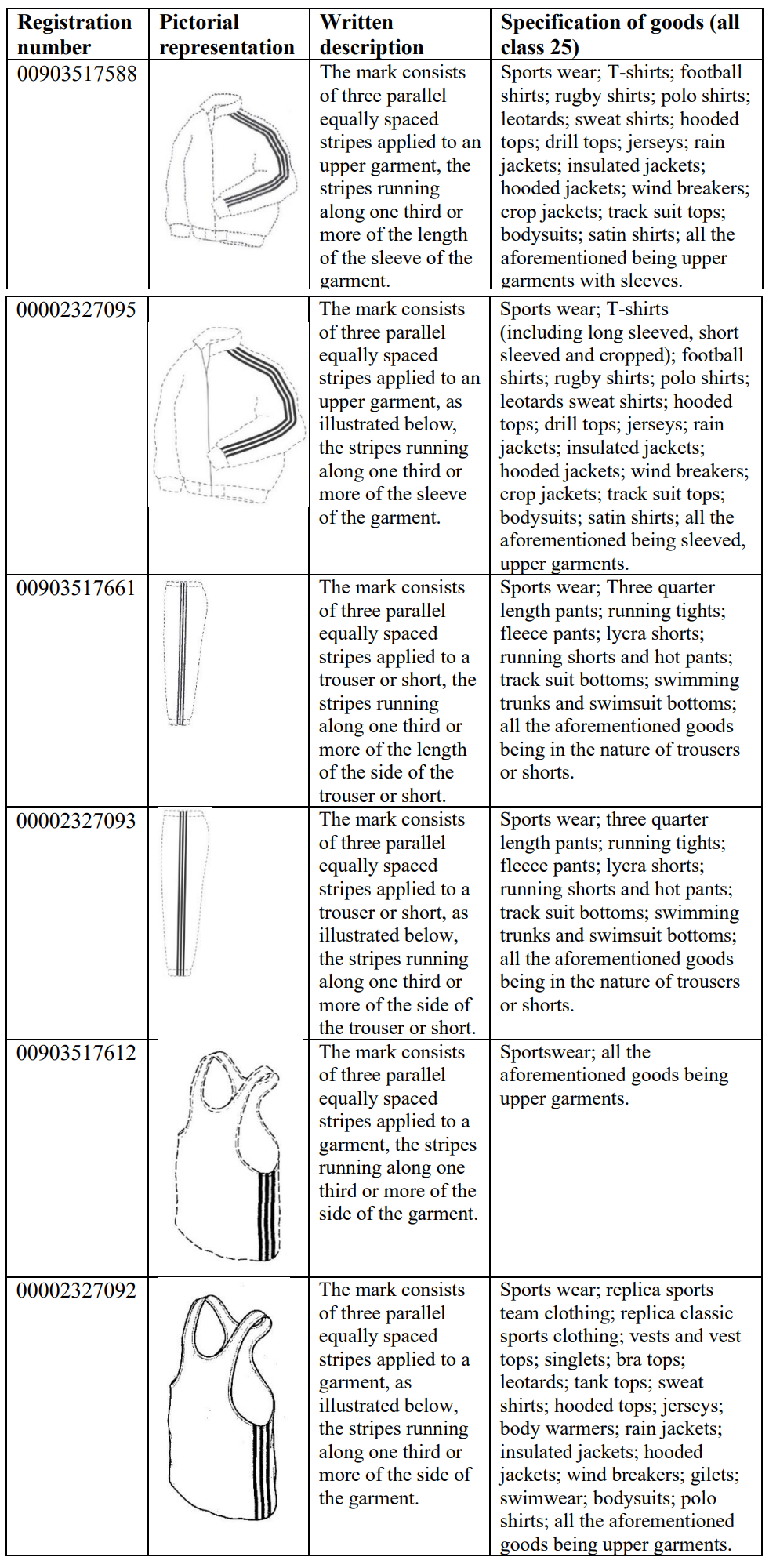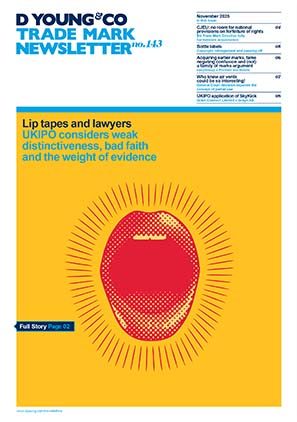Lessons in clarity and precision from Thom Browne and Babek: what qualifies as a registrable trade mark?
In two judgments, issued on the same day, the Court of Appeal set out the lay of the land for the registrability of trade marks and the requirements for clarity and precision when drafting trade mark descriptions.
Both cases concern the same legal framework, namely what constitutes a valid trade mark. For a sign to be considered registrable under Section 1(1) of the Trade Marks Act 1994, it must satisfy the following conditions:
- it must be a sign;
- that sign must be capable of being represented graphically; and
- the sign must be capable of distinguishing the goods or services of one entity from those of another.
These appeals focus on the first two conditions. Under the first, the mark must be a single, identifiable sign. EU case law makes clear that a description which embraces a multiplicity of possible forms does not meet this requirement (Dyson). The second condition requires the trade mark to be clear, precise, self-contained, easily accessible, intelligible, durable and objective (Sieckmann).
Thom Browne v adidas
Thom Browne sought to invalidate 16 of adidas’s registered position marks, each depicting variations of a three-stripe design applied to either clothing, footwear, or accessories. The marks were described as “three parallel, equally spaced stripes” extending over one-third or more of a sleeve, leg, or side. At first instance, the High Court found eight of the marks invalid for failing to satisfy Section 1(1) of the Trade Marks Act 1994.
adidas appealed the decision in respect of six of the invalidated marks, arguing that:
- the judge had misinterpreted the EU Court of Justice’s decision Dyson regarding “unrepresented signs”;
- the judge overstated the variability encompassed by each mark;
- the phrase “one third or more” had been wrongly treated as lacking clarity and precision; and
- the judge placed undue emphasis on visual variation rather than the perception of origin.

The Court of Appeal dismissed all grounds and upheld the High Court’s findings on invalidity findings.
Lord Justice Arnold agreed with the first instance judge that the written descriptions allowed for excessive variations, noting that they encompassed differences not only in stripe length and positioning but also orientation. While a full pictorial depiction of every variation is not required, the image and description together must define a single, identifiable sign with sufficient clarity and precision.
On the wording “one third or more,” Lord Justice Arnold held that even apparently clear language may still cause ambiguity if the written description extends beyond what is visually depicted. Such ambiguity grants the proprietor an unfair competitive advantage.
The court also concluded that evidence of use does not assist in interpreting the representation or written description of a registered mark. Such evidence did not demonstrate that a large number of variations had been used by adidas, let alone that these variations would all be understood as conveying a single origin.
Babek International v Iceland Foods
Iceland Foods counterclaimed for invalidity of Babek’s registered trade mark (depicted below), described as “Gold oval with embossed BABEK writing. Colour claimed: Gold, Black.” Iceland argued that the mark failed to comply with Section 1(1) of the Trade Marks Act 1994.

The High Court found that the mark was sufficiently clear and precise, notwithstanding its minor ambiguities. Iceland appealed, contending that:
- the judge applied the wrong test for determining when colour hues must be specified;
- alternatively, the “capacity to distinguish” test was misapplied;
- the effect of the mark’s categorisation was misunderstood;
- the judge failed to recognise that the pictorial representation and written description have equal weight;
- irrelevant matters were considered; and
- findings were inconsistent or unsupported.
The Court of Appeal agreed that the wrong test had been applied regarding colour hues but held that this did not affect the outcome. It confirmed that when interpreting a trade mark, the court must consider (a) its categorisation, (b) the pictorial representation, and (c) the written description. No factor takes precedence over others.
Lord Justice Arnold concluded that the mark was sufficiently clear and precise. The image aligned with its categorisation as a coloured logo, the written description was consistent, and “embossed” merely described texture or visual effect, not a 3D form.
The only difference from the first instance judgment concerned the finding that minor variations in hue were permissible. Lord Justice Arnold held that nothing in the description suggested the depiction was merely illustrative or encompassed hue variation.
In short
These decisions provide valuable guidance on what constitutes a registrable trade mark and underline the importance of precision and consistency in trade mark applications. These points are even more important in relation to figurative and position marks. The way such a mark is represented and described at the point of filing is just as important as the mark itself. The boundaries of protection are set at the time of registration, and a lack of clarity can leave even well-known brands exposed to challenges.
Brand owners should seek legal advice during the filing process to ensure that representations and descriptions are drafted with the necessary clarity and precision to avoid future pitfalls when it comes to enforcement.
Case details at a glance
Jurisdiction: United Kingdom
Decision level: Court of Appeal
Parties: Thom Browne Inc & anr v Adidas AG and Babek International Limited v Iceland Foods Limited
Date: 23 October 2025
Citation: [2025] EWHC 2990 (Ch) and [2025] EWCA Civ 1341
Link to decisions (PDFs): https://www.judiciary.uk/wp-content/uploads/2025/10/Thom-Browne-Inc.-v-Adidas.pdf and https://www.judiciary.uk/wp-content/uploads/2025/10/Babek-International-v-Iceland-Foods.pdf
Related articles
- For a detailed summary of the first instance decision, see: Stripe strife: first High Court exploration of position mark infringement and registrability
- For a detailed summary of the first instance decision, see: Pedantry on ice: High Court explores the relationship between trade marks and their descriptions

